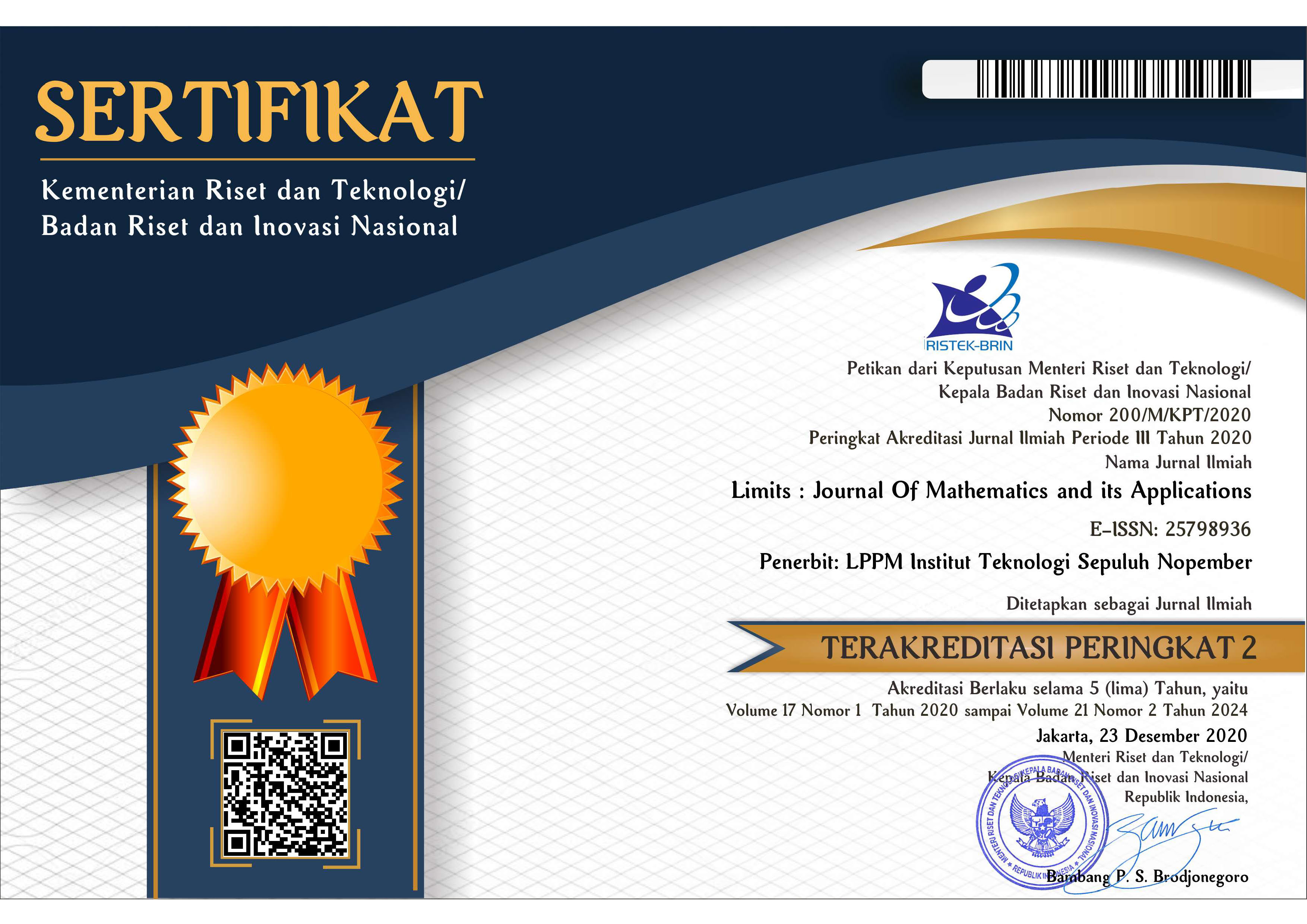Model Kredibilitas Bühlmann-Straub untuk Frekuensi Klaim Berdistribusi Binomial Negatif–Lindley
Abstract
Keywords
Full Text:
PDFReferences
H. Bühlmann and A. Gisler, A Course in Credibility Theory and Its Applications. Springer Science & Business Media, 2006.
A. R. Effendie, Teori Risiko Aktuaria dengan Software R. Yogyakarta: UGM Press, 2019.
J. A. Green, “Too many zeros and/or highly skewed? a tutorial on modelling health behaviour as count data with Poisson and Negative Binomial regression,” Heal. Psychol. Behav. Med., vol. 9, no. 1, pp. 436–455, 2021, doi: 10.1080/21642850.2021.1920416.
H. Zamani and N. Ismail, “Negative binomial-Lindley distribution and its application,” J. Math. Stat., vol. 6, no. 1, pp. 4–9, 2010, doi: 10.3844/jmssp.2010.4.9.
L. M. Wen, W. Wang, and J. L. Wang, “The credibility premiums for exponential principle,” Acta Math. Sin. Engl. Ser., vol. 27, no. 11, pp. 2217–2228, 2011, doi: 10.1007/s10114-011-9198-4.
A. Hassan Zadeh and D. A. Stanford, “Bayesian and Bühlmann credibility for phase-type distributions with a univariate risk parameter,” Scand. Actuar. J., vol. 2016, no. 4, pp. 338–355, 2016.
T. M. Karina, S. Nurrohmah, and I. Fithriani, “Buhlmann credibility model in predicting claim frequency that follows heterogeneous Weibull count distribution,” in Journal of Physics: Conference Series, 2019, vol. 1218, no. 1, p. 012041. doi: 10.1088/1742-6596/1218/1/012041.
I. Maulidi and V. Apriliani, “Model kredibilitas Bühlmann dengan frekuensi klaim berdistribusi Binomial Negatif-Lindley,” Limits J. Math. Its Appl., vol. 18, no. 1, pp. 71–78, 2021, doi: 10.12962/limits.v18i1.6690.
I. Maulidi, W. Erliana, A. D. Garnadi, S. Nurdiati, and I. G. P. Purnaba, “Penghitungan kredibilitas dengan pustaka actuar dalam R,” J. Math. Its Appl., vol. 16, no. 2, pp. 45–52, 2017, doi: 10.29244/jmap.16.2.45-52.
S. Ghahramani, Fundamentals of Probability. New York (US): Prentice Hall, 2005.
L. J. Bain and M. Engelhardt, Introduction to Probability and Mathematical Statistics. California: Duxbury Press, 1992.
M. E. Ghitany, B. Atieh, and S. Nadarajah, “Lindley distribution and its application,” Math. Comput. Simul., vol. 78, no. 4, pp. 493–506, 2008, doi: 10.1016/j.matcom.2007.06.007.
I. S. Zahra, “Perhitungan Premi dengan Menggunakan Model Kredibilitas Buhlmann dan Buhlmann Straub,” Institut Pertanian Bogor, 2019.
DOI: http://dx.doi.org/10.12962%2Flimits.v20i1.12618
Refbacks
- There are currently no refbacks.
Jumlah Kunjungan:

Limits: Journal Mathematics and its Aplications by Pusat Publikasi Ilmiah LPPM Institut Teknologi Sepuluh Nopember is licensed under a Creative Commons Attribution-ShareAlike 4.0 International License.
Based on a work at https://iptek.its.ac.id/index.php/limits.






